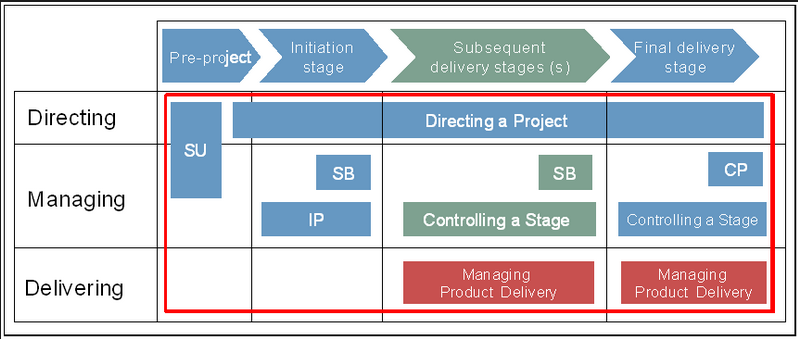


Someone, somewhere has an idea. A quirticle of quirkity collides with a person's subconscious and am idea is born. How to react to a change in legislation, a new business objective or the opening lines for a poem are created. You need to formlate the outlines of a project with a beginning a middle and and end to deliver that idea to your customers, readership or government. You trigger that project iwth a Project Mandate. A Project Mandate could be anything from a corridor conversation to a well defined and justified project definition.
Prior to the full scoping of a project and it's attendent complexity and cost, it is important to verify that the project is worthwhile and viable. This is the Starting up a Project process that culminates in a Project Brief. The Project Board reviews said brief and decides whether or not to initiate the project.
If the quirticle has been successful and the idea is a good one then the project is Initiated.
This process begins just a little bit before the project is initiated. Its purpose is to clarify what enables the Project Board to be accountable for the project's success. The Project Board are given the correct level of responsibility and the manager is delegated the correct tasks for day-to-day management.
Don't race off and spend a lot of money on something which although it might be a brilliant idea will cost megadosh and be a megaflop (and I don't mean floating point operations) if not planned correctly.
Take time to understand the work that needs to be done, what the products are and that you know everyone who needs to know what is going on and that the right people are involved to ensure success.
That done, and you have gained more confidence in the idea, you can commit to the investment.
We've thought about our various stratagies and products and now we must deliver some stuff. Here we assign work to be done and monitor the progress of the work. We bump into issues which we log and deal with. We keep all interested parites informed using our communications strategy and gerenally get stuff done while know what stuff is being done and if stuff is not being done what we do about it.
How do the internal teams interface with the external teams and what part do they all play in delivering out products? Line all this up on a central plan with workpackages flying about like Christams presents being opened and enjoyed by the recipients or consigned to the "give to someone else next Christmas" pile if it needs rework.
There are a range of outcomes to this stage. Firstly we must always hope that the Products are all present and correct and we can set up a plan for the next Stage. Or, things have gone slightly pear-shaped and we need to do a spot of rplanning for this Stage before continuing on. OR! It all gone Pete Tong and we need to review the basic premise of the Project, perhaps replanning the whole shooting match as reported in an Exception Plan. OORR, stop it as a bad job and stop sending good money after bad.
In this process we confirm that all the lovely Products we have created to deliver the original idea generated from the impact of a quirticle on someone's subconcsious has been successful.
No one else is able to make this happen so we ask the users if they are happy with our products. We make sure the custodians of the Products can keep them well fed and happy like a Tamagotchi. We need to do this before the project team is disbanded. Do a spot of forecasting to expose any added value delivered. Make sure any open issues are closed and and open risks have mitigations handed over the the Tamagotchi-ees.
